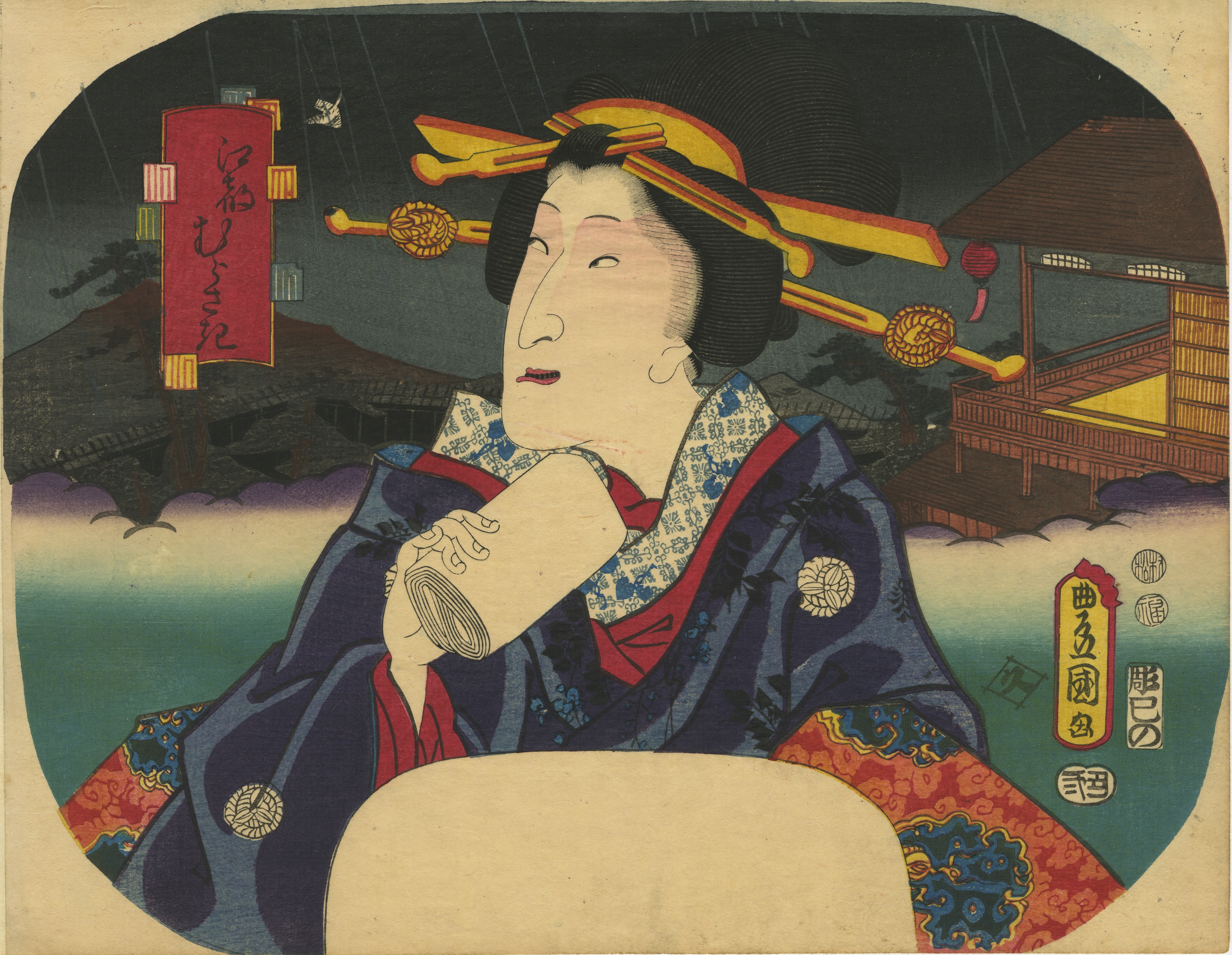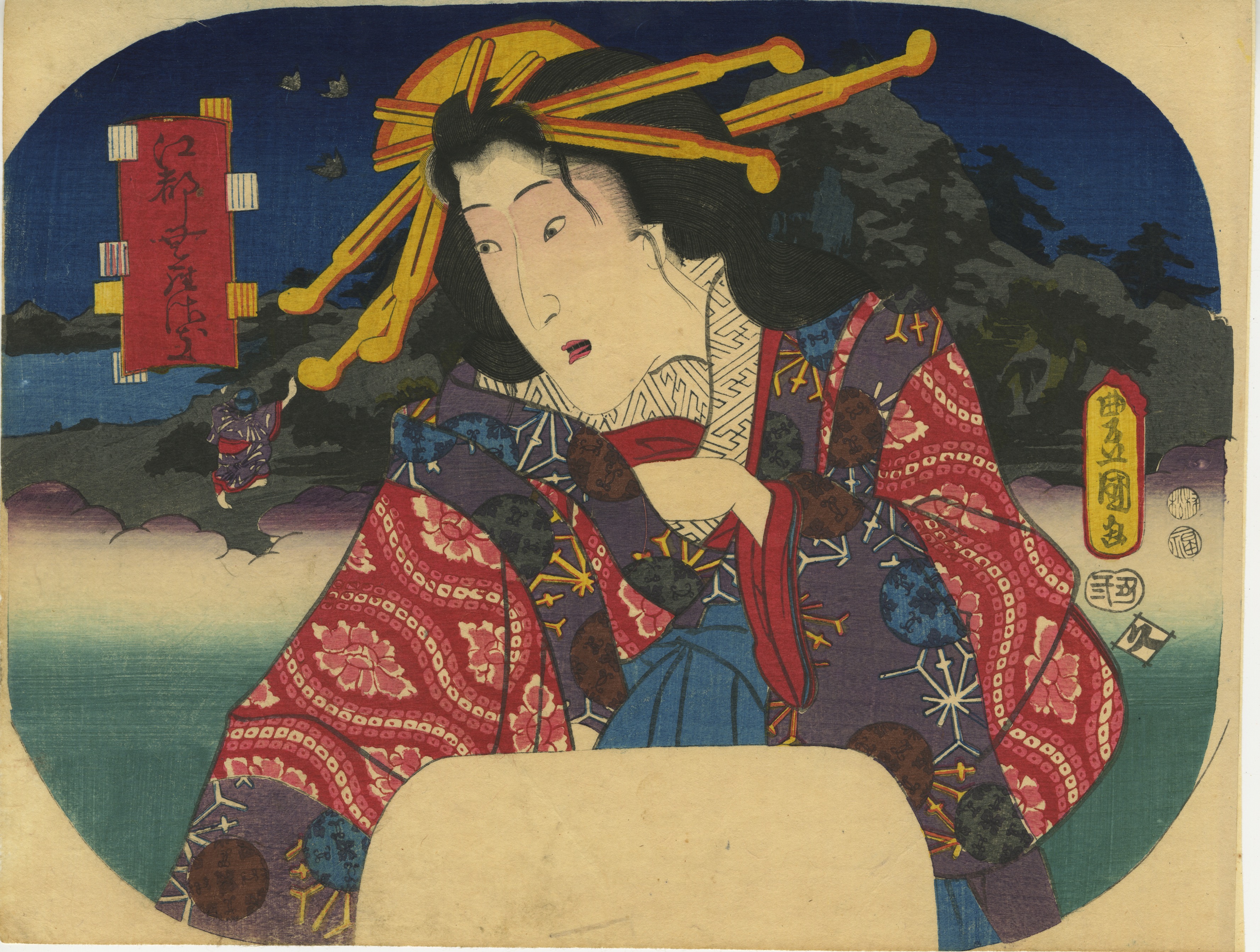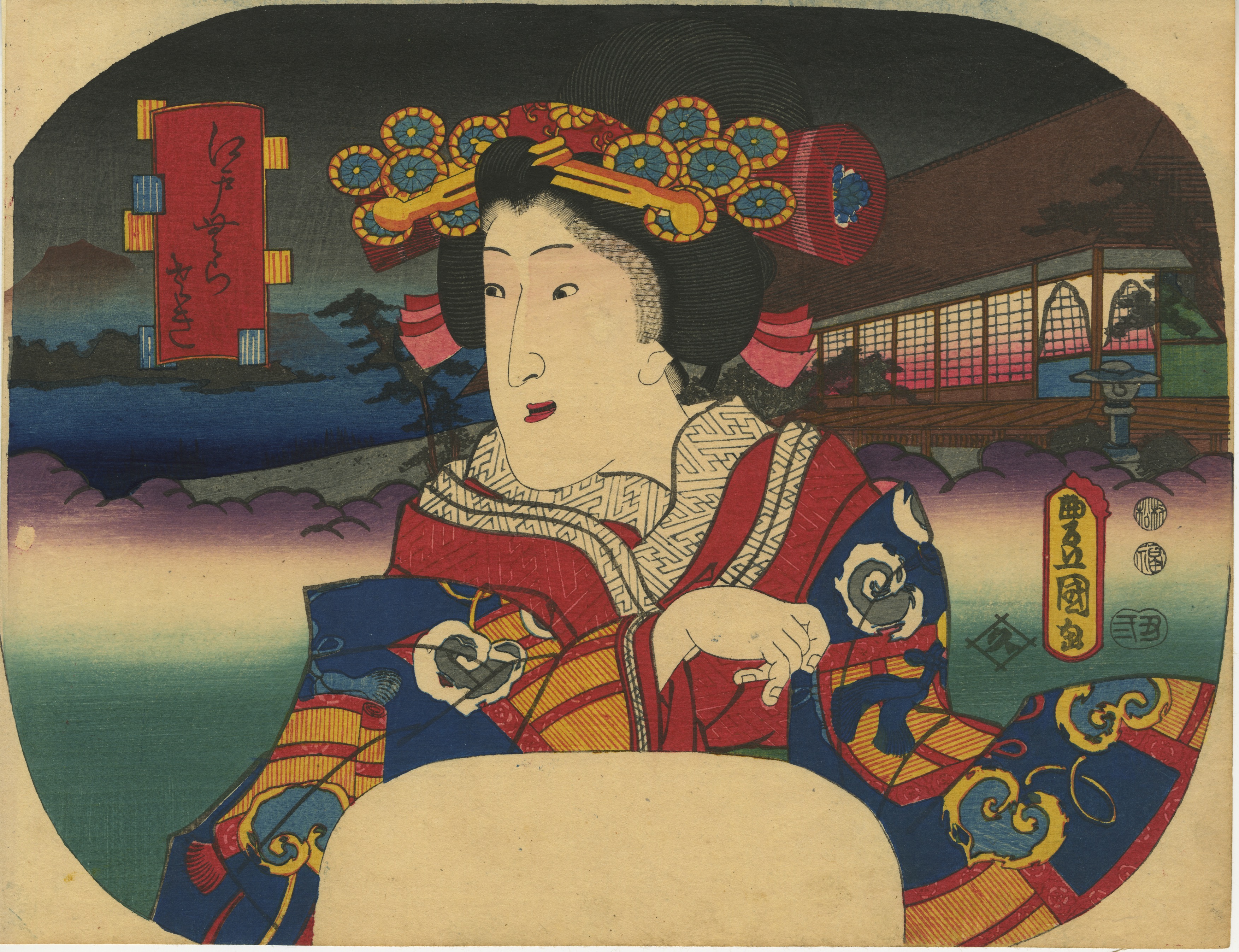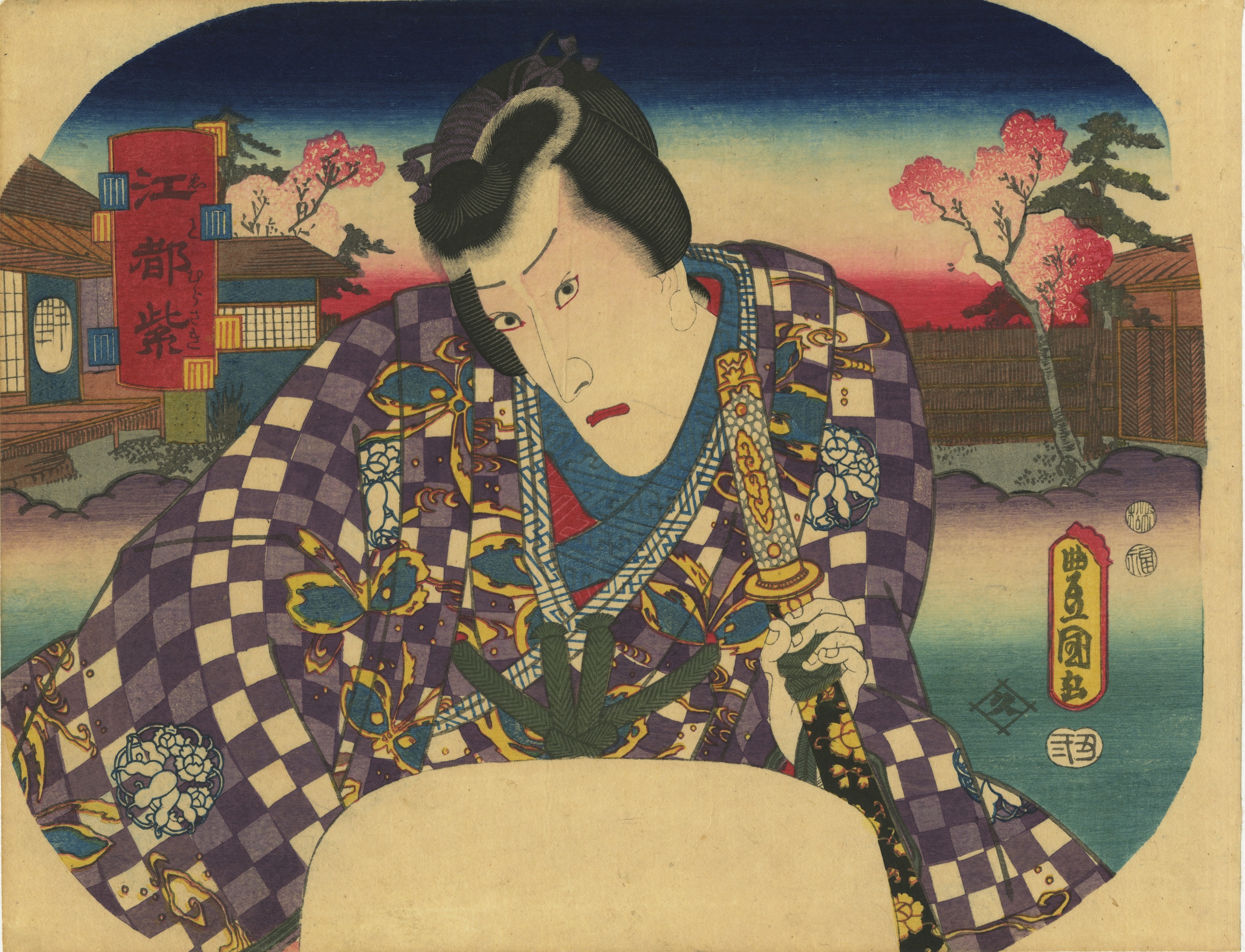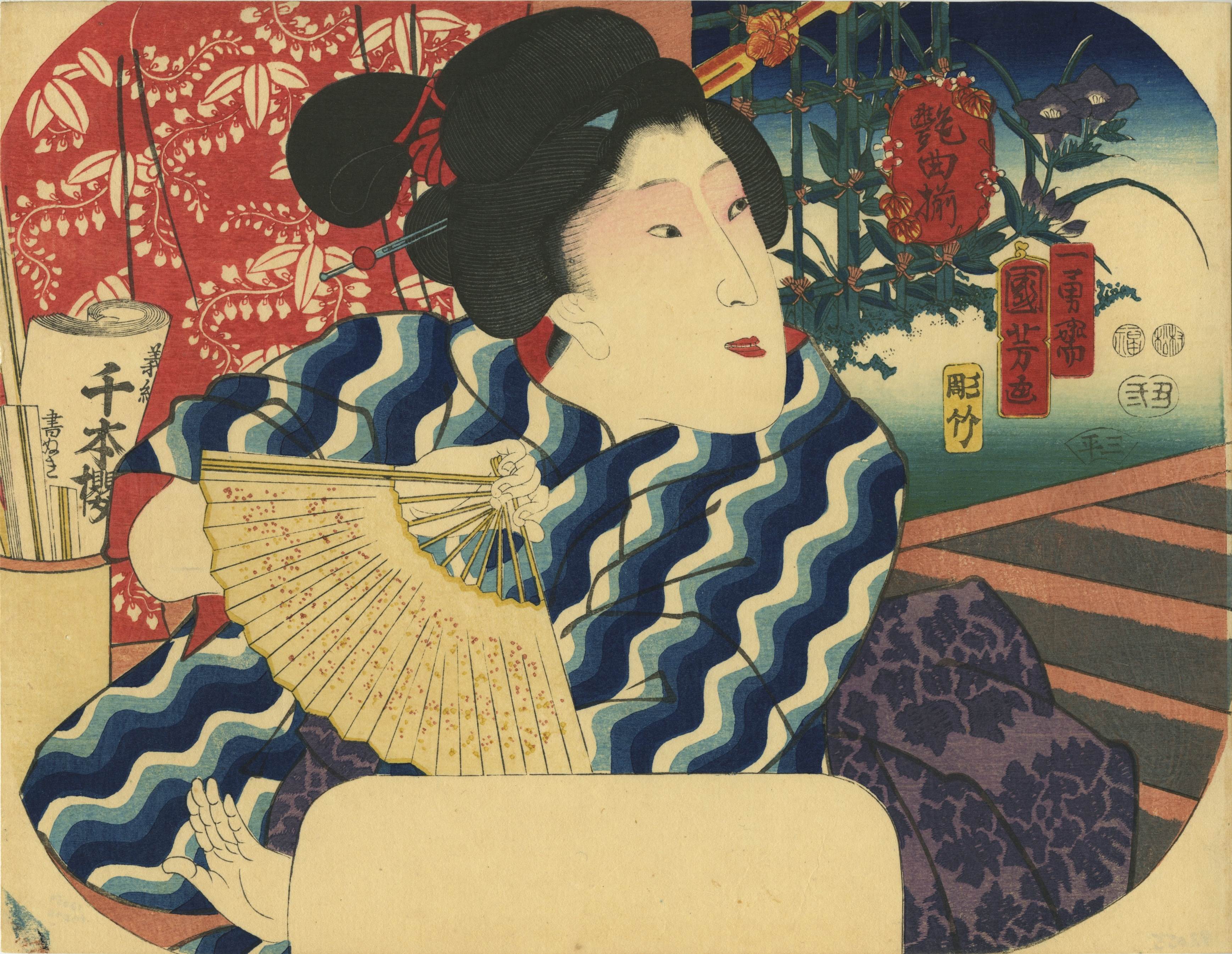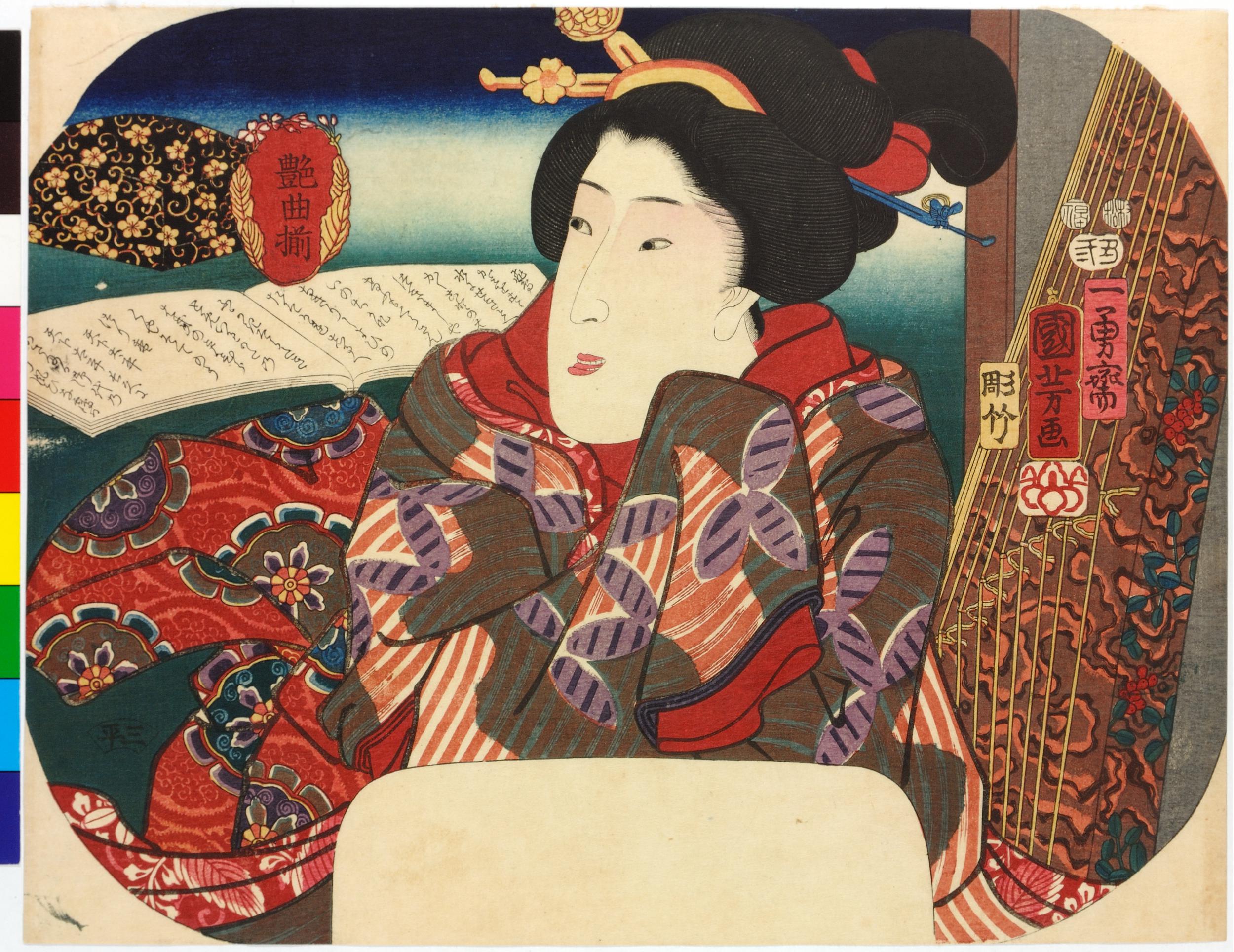-
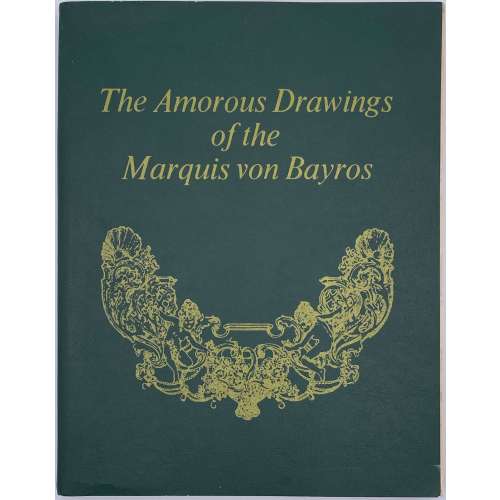 Title: The amorous drawings | {vignette} | of the | Marquis von Bayros | Part I | BRANDON HOUSE | NORTH HOLLYWOOD || Title page verso: A BRANDON HOUSE BOOK | PUBLISHED BY ARRANGEMENT WITH | CYTHERA PRESS | COPYRIGHT 1968 BY CYTHERA PRESS | ALL RIGHTS RESERVED. | MANUFACTURED IN THE UNITED STATES OF AMERICA || Pagination: [1-3] 4-238 [2], 292 illustrations within pagination. Content: Preface by Wilhelm M. Busch, biography of Von Bayros by Johann Pilz, two essays by Von Bayros; 292 illustrations by Marquis Franz von Bayros; Part I and II in one volume. Exterior: 28 x 22 cm, publisher's green wrappers with yellow lettering and fac-simile drawing of von Bayros to cover, lettering to spine. A re-print softcover edition of the original Cythera Press 1st edition, see: LIB-2246.2019
Title: The amorous drawings | {vignette} | of the | Marquis von Bayros | Part I | BRANDON HOUSE | NORTH HOLLYWOOD || Title page verso: A BRANDON HOUSE BOOK | PUBLISHED BY ARRANGEMENT WITH | CYTHERA PRESS | COPYRIGHT 1968 BY CYTHERA PRESS | ALL RIGHTS RESERVED. | MANUFACTURED IN THE UNITED STATES OF AMERICA || Pagination: [1-3] 4-238 [2], 292 illustrations within pagination. Content: Preface by Wilhelm M. Busch, biography of Von Bayros by Johann Pilz, two essays by Von Bayros; 292 illustrations by Marquis Franz von Bayros; Part I and II in one volume. Exterior: 28 x 22 cm, publisher's green wrappers with yellow lettering and fac-simile drawing of von Bayros to cover, lettering to spine. A re-print softcover edition of the original Cythera Press 1st edition, see: LIB-2246.2019 -
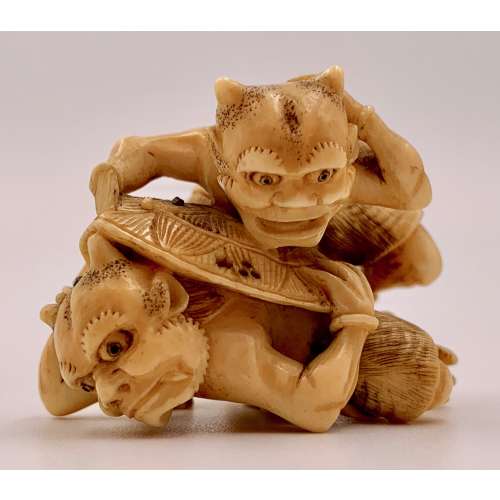
Ivory netsuke with the design of wrestling Oni by Kaigyokusai Masatsugu [懐玉齋正次].
Signed: Masatsugu [正次] Osaka School. Made: 1850-1900; Late Edo - Meiji Period. Dimensions: 44 x 40 x 33 mm.The right hand of the upper Oni and one toe of the lower Oni are missing. Ref.: Raymond Bushell. Collector's netsuke. Weatherhill, NY, Tokyo; Ninth printing, 2002, pp. 84-87. "Kaigyokusai Masatsugu (1813-1892) was an Osaka based carver renowned for his flawless technique as illustrated upon this netsuke with its finely carved ivory form, with no staining and bright inlaid eyes" (V&A).
-
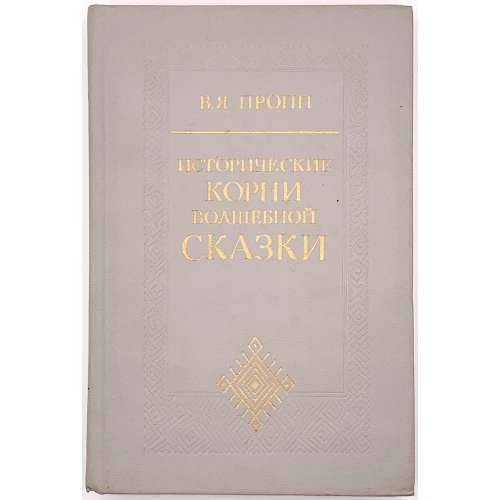 Hardcover volume, 22.2 x 14.8 cm, bound in grey buckram, gilt lettering in an ornamental frame to front and spine, blind-stamped lettering to back; pp.: [1-2] 3-364 [4], collated 8vo:1-238, total 184 leaves, 368 pages. Title-page: ЛЕНИНГАДСКИЙ ОРДЕНА ЛЕНИНА | И ОРДЕНА ТРУДОВОГО КРАСНОГО ЗНАМЕНИ | ГОСУДАРСТВЕННЫЙ УНИВЕРСИТЕТ ИМЕНИ А. А. ЖДАНОВА | {in two-compartment frame: В. Я. ПРОПП {within a compartment} | ИСТОРИЧЕСКИЕ КОРНИ ВОЛШЕБНОЙ СКАЗКИ {within a compartment} | ИЗДАТЕЛЬСТВО ЛЕНИНГРАДСКОГО УНИВЕРСИТЕТА | ЛЕНИНГРАД 1986 || Print run: 25,000 copies. Edition: 2nd edition; for the 1st edition, see [LIB-3184.2023] В. Я. Пропп. Исторические корни волшебной сказки. — Л.: ЛГУ, 1946. English title: [LIB-1615.2018] The historical roots of the fairy tale. Contributors: Владимир Яковлевич Пропп [Vladimir Propp] (Russian, 1895 – 1970)
Hardcover volume, 22.2 x 14.8 cm, bound in grey buckram, gilt lettering in an ornamental frame to front and spine, blind-stamped lettering to back; pp.: [1-2] 3-364 [4], collated 8vo:1-238, total 184 leaves, 368 pages. Title-page: ЛЕНИНГАДСКИЙ ОРДЕНА ЛЕНИНА | И ОРДЕНА ТРУДОВОГО КРАСНОГО ЗНАМЕНИ | ГОСУДАРСТВЕННЫЙ УНИВЕРСИТЕТ ИМЕНИ А. А. ЖДАНОВА | {in two-compartment frame: В. Я. ПРОПП {within a compartment} | ИСТОРИЧЕСКИЕ КОРНИ ВОЛШЕБНОЙ СКАЗКИ {within a compartment} | ИЗДАТЕЛЬСТВО ЛЕНИНГРАДСКОГО УНИВЕРСИТЕТА | ЛЕНИНГРАД 1986 || Print run: 25,000 copies. Edition: 2nd edition; for the 1st edition, see [LIB-3184.2023] В. Я. Пропп. Исторические корни волшебной сказки. — Л.: ЛГУ, 1946. English title: [LIB-1615.2018] The historical roots of the fairy tale. Contributors: Владимир Яковлевич Пропп [Vladimir Propp] (Russian, 1895 – 1970) -
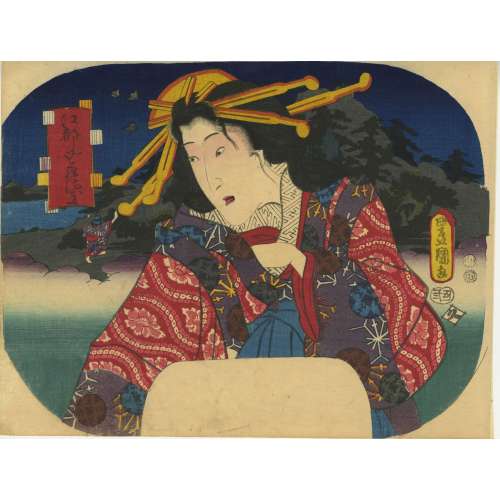 Utagawa Kunisada [歌川 国貞]; a.k.a. Utagawa Toyokuni III [三代歌川豊国] (Japanese, 1786 – 1865). Signed: Toyokuni ga [豊国 画] in a yellow toshidama cartouche. Publisher: Unknown, seal [久] Kyū (Japanese, fl. c. 1851 – 1861); (Marks 07-023 | U176a, possibly Sagamia Kyūzō). Date seal and double nanushi censor seals: Fuku & Muramatsu, Kaei 6, 2nd month (2/1853). Inscription in a red cartouche: (Purple of Edo // Purple of the Bay Capital) [江都むらさき] (Edo Murasaki), alluding to Murasaki Shikibu [紫 式部] (Japanese, c. 973/8 – c. 1014/31), the author of Genji Monogatari [源氏物語] (The Tale of Genji), a Heian period novel which was the source of a parody Nise Murasaki Inaka Genji [偐紫田舎源氏] (Fake Murasaki’s Rustic Genji) by Ryutei Tanehiko [柳亭種彦] (Japanese, 1783 – 1842). According to Horst Graebner: The actor is most probably Onoe Baikō IV [四代目尾上菊五郞] Onoe Kikugorō IV [四代目 尾上菊五郎] (Japanese, 1808 – 1860); other names: Onoe Baikō IV, Onoe Eizaburō III, Onoe Kikue, Nakamura Tatsuzō, Nakamura Kachō. One of the series of Kunisada's fan prints in this collection:
Utagawa Kunisada [歌川 国貞]; a.k.a. Utagawa Toyokuni III [三代歌川豊国] (Japanese, 1786 – 1865). Signed: Toyokuni ga [豊国 画] in a yellow toshidama cartouche. Publisher: Unknown, seal [久] Kyū (Japanese, fl. c. 1851 – 1861); (Marks 07-023 | U176a, possibly Sagamia Kyūzō). Date seal and double nanushi censor seals: Fuku & Muramatsu, Kaei 6, 2nd month (2/1853). Inscription in a red cartouche: (Purple of Edo // Purple of the Bay Capital) [江都むらさき] (Edo Murasaki), alluding to Murasaki Shikibu [紫 式部] (Japanese, c. 973/8 – c. 1014/31), the author of Genji Monogatari [源氏物語] (The Tale of Genji), a Heian period novel which was the source of a parody Nise Murasaki Inaka Genji [偐紫田舎源氏] (Fake Murasaki’s Rustic Genji) by Ryutei Tanehiko [柳亭種彦] (Japanese, 1783 – 1842). According to Horst Graebner: The actor is most probably Onoe Baikō IV [四代目尾上菊五郞] Onoe Kikugorō IV [四代目 尾上菊五郎] (Japanese, 1808 – 1860); other names: Onoe Baikō IV, Onoe Eizaburō III, Onoe Kikue, Nakamura Tatsuzō, Nakamura Kachō. One of the series of Kunisada's fan prints in this collection: -
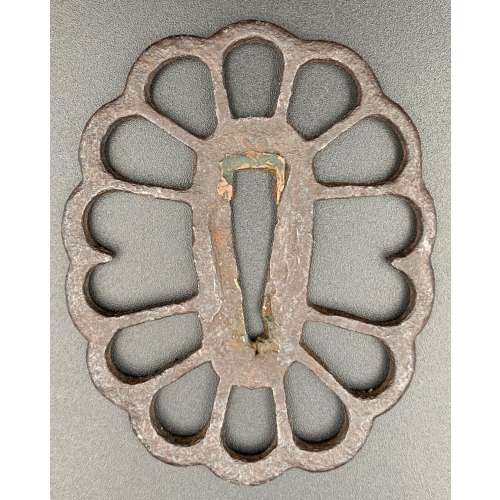
Iron tsuba with chrysanthemum design in openwork (sukashi). Copper sekigane.
Late Heian through Kamakura period (ca. 1150 - 1200's).
Size: 78.4 x 60.9 x 3.5 mm; weight: 45.7 g
Provenance: Boris Markhasin Message from Boris Markhasin (13-AUG-2019): It is a very rudimentary tachi tsuba, and the iron is old and really nothing to draw attention. However, this is a very old tsuba, and that is what makes it very special and an important study piece. This tsuba likely dates to the late Heian through Kamakura (ca. 1150 - 1200's) -- by consensus, since such examples are extremely rare, and none are mounted to my knowledge, so few direct analogues. The form is interesting for a variety of reasons. The smaller size, an oval form is associated more with 12th/13th c styles. The sukashi kiku motif is very interesting as it clearly pushes back the dating of large scale sukashi far back in time. This shouldn't be surprising, but for some reason, we (really mainly westerners) naively tend to associate sukashi with the Muromachi and younger. The two missing spokes are by consensus likely later removals to accommodate kozuka and kogai -- but this is not certain, and it could be an original styling. A key kantei point is the elongate, narrow, slightly squared seppa dai. This is a characteristic of early koshirae, which were much thinner and more delicate than the types we are used to seeing that date pretty much to the late Muromachi and later. I am always amazed when I have a chance to interrogate early koshirae at how thin they are - I want to call them fragile, but they were actually quite resilient. The walls were super thin, but the top and bottom edges were a bit thicker, providing a bit of structural support... but this is another thread topic. Of all the tsuba I have owned, this is the tsuba that has most clearly reflected the shape of the old style of saya / tsuka. -
![Joseph Burke and Colin Caldwell. Hogarth: The Complete Engravings. – Harry N. Abrams, Inc., Publishers, New York, [1968].](https://varshavskycollection.com/wp-content/uploads/2021/02/LIB-2111.2019-a-scaled-500x500.jpeg) Title: Joseph Burke and Colin Caldwell | Hogarth | The Complete Engravings | Harry N. Abrams, Inc., Publishers, New York || Pagination: [1-4] 5-30 (text), unpaginated: 128 leaves of illustrations (267 plates), 16 leaves of descriptions, folding list of plates: total number of leaves 160, incl. one folding. Exterior: 34 x 24.5 cm, hardbound; original brown cloth, silver lettering to spine, pictorial DJ. Harry N. Abrams (British-American, 1905 – 1979). Joseph Terence Burke (British, 1913 – 1992). Colin Caldwell (British, 1913 – 1989).
Title: Joseph Burke and Colin Caldwell | Hogarth | The Complete Engravings | Harry N. Abrams, Inc., Publishers, New York || Pagination: [1-4] 5-30 (text), unpaginated: 128 leaves of illustrations (267 plates), 16 leaves of descriptions, folding list of plates: total number of leaves 160, incl. one folding. Exterior: 34 x 24.5 cm, hardbound; original brown cloth, silver lettering to spine, pictorial DJ. Harry N. Abrams (British-American, 1905 – 1979). Joseph Terence Burke (British, 1913 – 1992). Colin Caldwell (British, 1913 – 1989). -
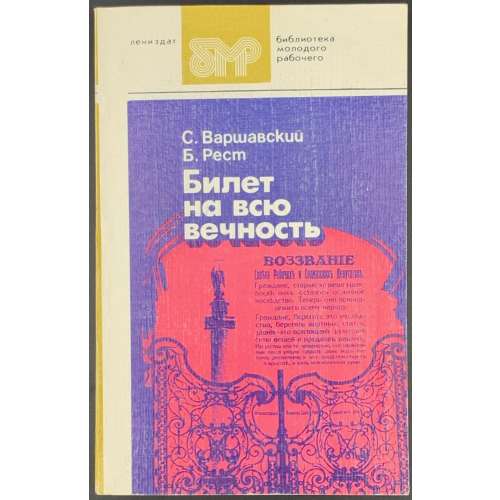 A book about the history and collections of The Hermitage museum in St. Petersburg during the October revolution of 1917. Paperback, 20 x 12.5 cm, 16mo, serial pictorial wrappers, blurb to rear; [1]-716 88( plates, not paginated) 9-1016; pp.: [2] 3-260 [4]: 264 pages + 16 pages of plates, not paginated, 152 leaves, incl. plates. Library pocket and card to front wrapper verso. Ink stamp of the Hermitage museum library. Title-page: «БМР» device // библиотека | молодого | рабочего | — | С. ВАРШАВСКИЙ | Б. РЕСТ | БИЛЕТ | НА ВСЮ | ВЕЧНОСТЬ | ПОВЕСТЬ ОБ ЭРМИТАЖЕ | В ТРЕХ ЧАСТЯХ | ЧАСТИ ПЕРВАЯ И ВТОРАЯ | ЛЕНИЗДАТ • 1986 || Sergei Petrovich Varshavsky [Сергей Петрович Варшавский] (Jewish-Russian, 1906 – 1980). B. Rest [Б. Рест; Юлий Исаакович Шапиро] (Jewish-Russian, fl. 1940 – 1980). Preface: Boris Piotrovsky [Борис Борисович Пиотровский] (Russian, 1908 – 1990).
A book about the history and collections of The Hermitage museum in St. Petersburg during the October revolution of 1917. Paperback, 20 x 12.5 cm, 16mo, serial pictorial wrappers, blurb to rear; [1]-716 88( plates, not paginated) 9-1016; pp.: [2] 3-260 [4]: 264 pages + 16 pages of plates, not paginated, 152 leaves, incl. plates. Library pocket and card to front wrapper verso. Ink stamp of the Hermitage museum library. Title-page: «БМР» device // библиотека | молодого | рабочего | — | С. ВАРШАВСКИЙ | Б. РЕСТ | БИЛЕТ | НА ВСЮ | ВЕЧНОСТЬ | ПОВЕСТЬ ОБ ЭРМИТАЖЕ | В ТРЕХ ЧАСТЯХ | ЧАСТИ ПЕРВАЯ И ВТОРАЯ | ЛЕНИЗДАТ • 1986 || Sergei Petrovich Varshavsky [Сергей Петрович Варшавский] (Jewish-Russian, 1906 – 1980). B. Rest [Б. Рест; Юлий Исаакович Шапиро] (Jewish-Russian, fl. 1940 – 1980). Preface: Boris Piotrovsky [Борис Борисович Пиотровский] (Russian, 1908 – 1990). -
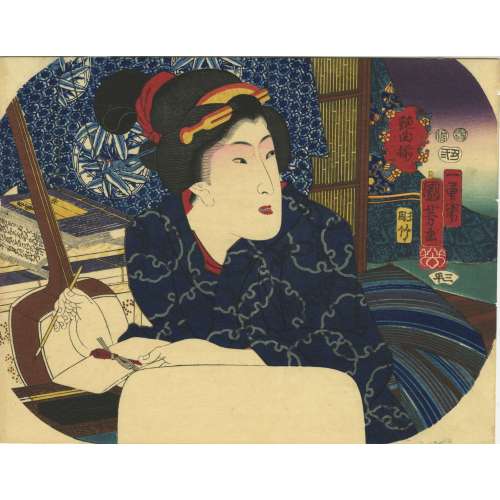 Artist: Utagawa Kuniyoshi [歌川 國芳] (Japanese, 1798 – 1861) Publisher: British Museum provides for the title as Enkyoku-zoroi [艶曲揃] (Set of Voluptuous Melodies) and the publisher as Sanpei. Indeed, 三平 (Sanpei) was a wholesale fan shop at the end of the Edo period. However, Andreas Marks identifies the publisher's seal as 三平 Mihei = Mikawaya Heiroku (1848-56), a member of the Fan Producing Guild (AM 11-016|325a). Block carver: Yokokawa Takejirō, seal: Carver Taki [彫竹] (Hori Take)
Artist: Utagawa Kuniyoshi [歌川 國芳] (Japanese, 1798 – 1861) Publisher: British Museum provides for the title as Enkyoku-zoroi [艶曲揃] (Set of Voluptuous Melodies) and the publisher as Sanpei. Indeed, 三平 (Sanpei) was a wholesale fan shop at the end of the Edo period. However, Andreas Marks identifies the publisher's seal as 三平 Mihei = Mikawaya Heiroku (1848-56), a member of the Fan Producing Guild (AM 11-016|325a). Block carver: Yokokawa Takejirō, seal: Carver Taki [彫竹] (Hori Take)Signed: Ichiyosai Kuniyoshi ga in a red cartouche and sealed with paulownia (kiri mon).
Date seal and double nanushi censor seals: Fuku & Muramatsu, 1853 (Kaei 6, 2nd month).
Size: Uchiwa-e (untrimmed fan print) 296 x 230 mm.
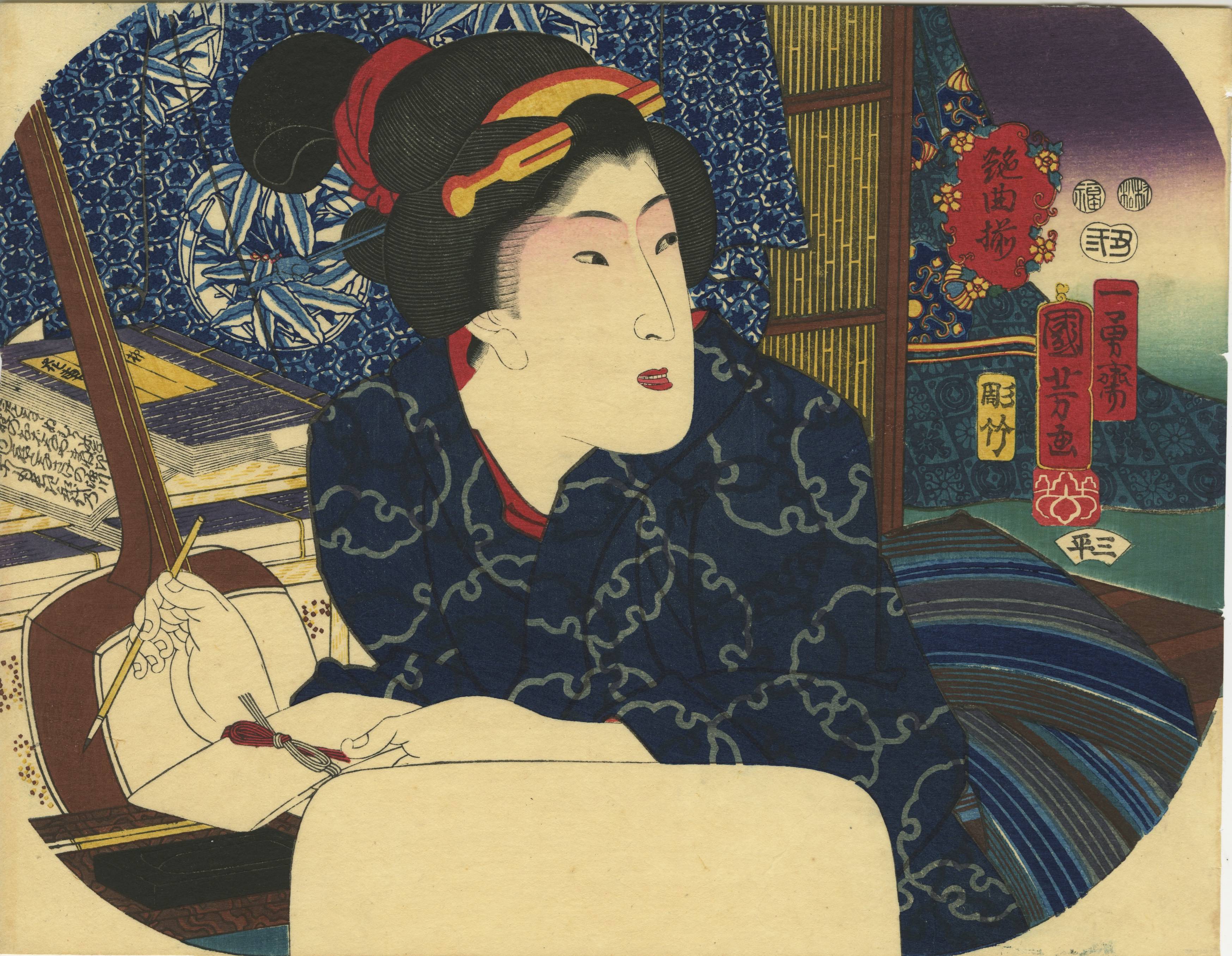
SVJP-0303.2019
-
![Bayros Zeichnungen. — Gala Verlag, Hamburg fur Fourier Verlag GmbH, Wiesbaden, 1987. — pp. 207. — 233 illustrations, essay by Wilhelm M. Busch. [Franz von Bayros Drawings].](https://varshavskycollection.com/wp-content/uploads/2021/02/LIB-2245.2019-a-scaled-500x500.jpeg) 26 x 18 cm, black cloth, white lettering to cover and spine, pictorial DJ, pp. [1-4] 5-207 [208 colophon], 233 b/w illustrations; essay by Wilhelm M. Busch.
26 x 18 cm, black cloth, white lettering to cover and spine, pictorial DJ, pp. [1-4] 5-207 [208 colophon], 233 b/w illustrations; essay by Wilhelm M. Busch.



